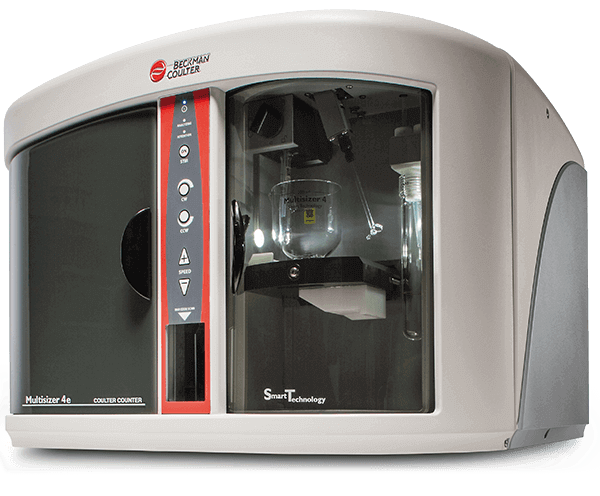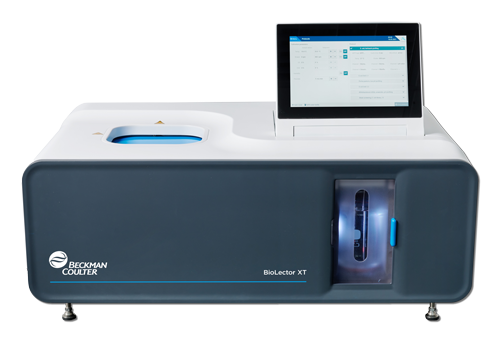
High-resolution characterization of cells and microorganisms based on the Coulter principle
How to measure the volume and size of cells, as well as the numeric, surface and volume distribution of all conceivable cell types
The Multisizer 4e is one of the most accurate and flexible cell and particle characterization instruments on the market, boasting an unparalleled sizing range of 0.2 to 1600 μm. The new 10 μm aperture allows users to study sub-cellular and micro-particles as small as 200 nm, while the advanced noise reduction system for small apertures improves measurement accuracy. But also large objects or particles sized well over 100 µm can be volumetrically detected and accurately counted.
The generated particle data are all processed by the DPP technology and can be stored and analyzed once more at a later time. This technology provides ultra high resolution and accuracy unattainable through any other technologies, being able to detect a single particle in a 1 ml sample with the optimal instrument configuration. Analysis results do not depend on particle shape, structural, or optical properties. Carry on reading to find out more, or contact us if you have any questions!
Advantages of characterizing cells and microorganisms with the Multisizer 4e:
- Maximum flexibility in measuring a wide range of cell types thanks to a sizing range of 0.2 – 1600 µm
- Reliable determination of the cells’ optimal harvesting time
- Early detection of differences in the mean cell volume (MCV) during experiments
- Later recalculation of particle distribution & observation of each individual particle possible
- Measurement of raw and modified polymeric particles

Intelligent features that simplify the application
Cell characterization based on the Coulter principle and DPP is suitable for:
- Bioprocess engineering, life sciences, academic & biopharmaceutical research
- Any cell type: bacteria, yeasts, fungi, plant and mammalian cells, including animal sperm, animal blood etc.
- Characterization of sub-cellular and micro-particles
- Cell size determination, cell counting and particle distribution
- Determination of the mean corpuscular volume (MCV)
